Marvel Rivals review: more than an Overwatch clone
Platforms reviewed: PS5 Pro
Available on: PS5, Xbox Series X, Xbox Series S, PC
Release date: 6 December, 2024
Marvel Rivals has successfully landed, following a launch that’d make any live service game jealous. Positioning itself among the crowded free-to-play market, Marvel Rivals is a shockingly complete package, with a whopping 33 Heroes to choose from at launch. Narrowly avoiding the danger of spreading itself too thin, developer NetEase Games has somehow managed to offer up a mostly-balanced, quality experience that’s much more than a simple Overwatch clone.
To get this out of the way, I don’t play Overwatch. I’d wager that over the years, I’ve probably put five hours total into it, and most of that was in Overwatch 2. For me, the second people start telling me roles I should fill, tactics that I must focus on in an online game, my eyes glaze over. With limited time to sink into a live service game every night, I frankly couldn’t care less about what meta I need to be running in order to emerge victorious against an opposing team. Before loading up Marvel Rivals then, I was already fairly sure that it wouldn’t grab me completely.
The first night of play did nothing to dispel this feeling, with Marvel Rivals’ particular visual style being extremely difficult to read at times. But during night two, something clicked, and it’s largely down to the game’s wide range of playable Heroes. Split into three classes: Vanguard, Specialist, and Duelist, each of the 33 Heroes is entirely distinct from one another.
Any frustrations I was having with a particular Hero could quickly be remedied by trying someone else. New characters and play styles didn’t always click, but after a while, I had at least five go-tos that were all an absolute blast to play as.
From page to play
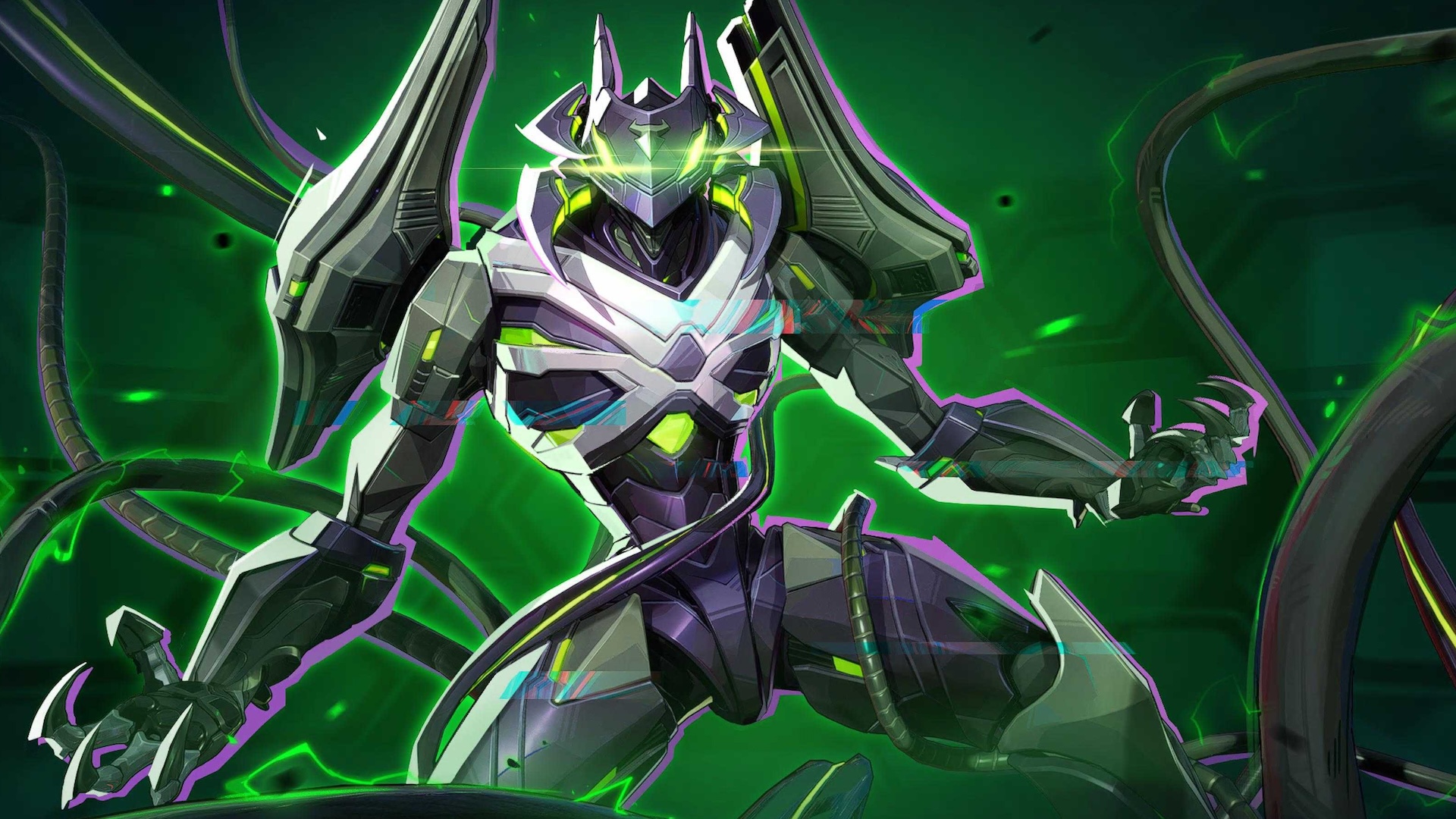
Visually, Marvel Rivals looks extremely high-budget and meticulously stylish. Somewhere between an anime and a comic book come to life, the game’s design language does a great job at distinguishing between each Hero in the roster. Broadly, everything from Most Valuable Player animations to pre-match loading screens pop with a confident flair. In motion, things are less successful, though characters do look great once the action kicks off.
The problem, for me at least, is how busy the screen can get once you have 10 characters, each with their own abilities and color schemes clashing together all at once. You do get used to it, but for a while I genuinely struggled to know exactly who I was being attacked by. Kill markers aren’t quite as punchy as they need to be, and the way abilities are labeled on screen can be difficult to parse during the heat of battle.
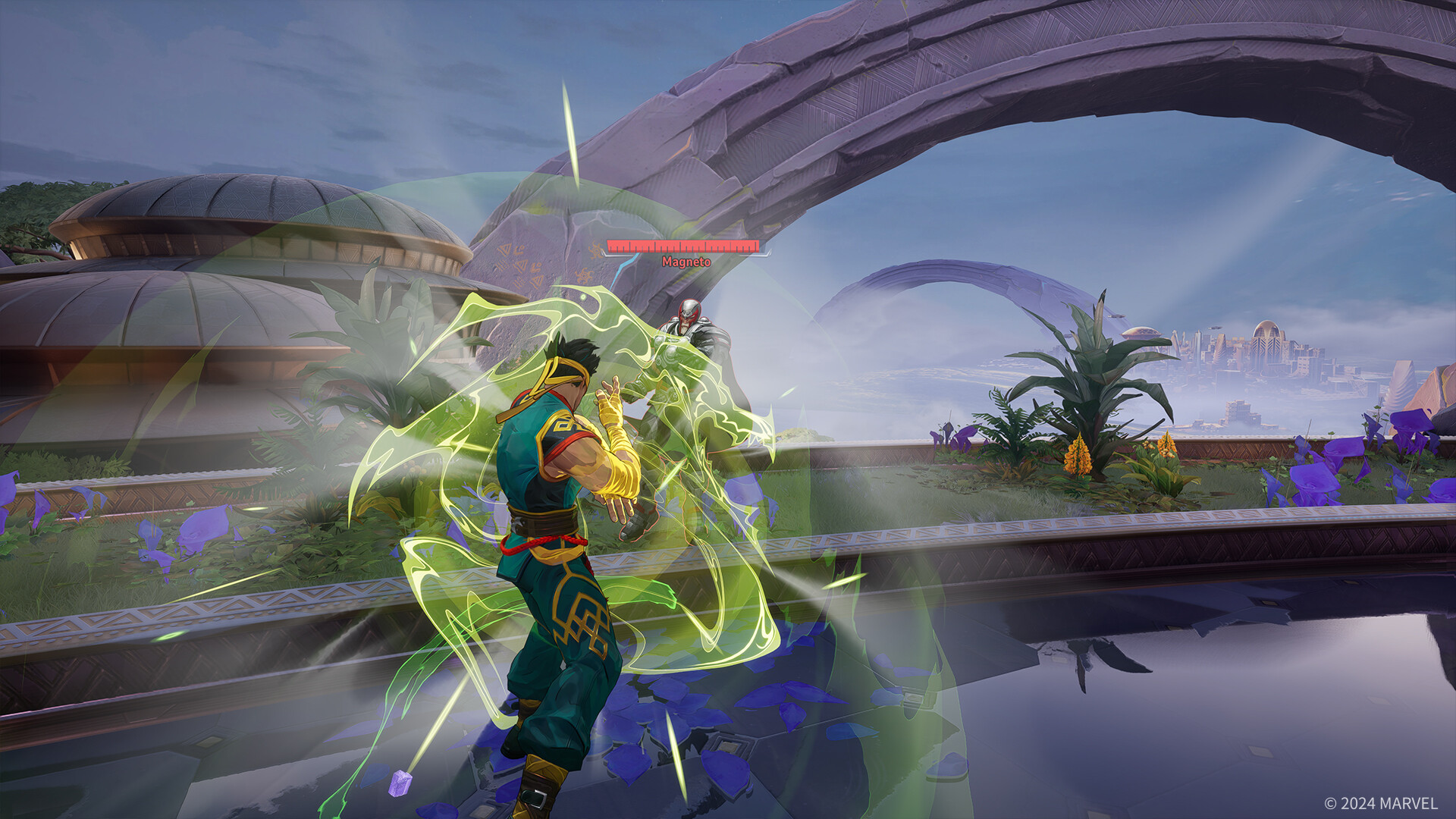
Playing as Iron Fist is fun, but does make you feel like a real scumbag. With his triple jump and wall run, it’s easy to sneak behind enemy lines and pick off unsuspecting opponents. Incoming damage? Not to worry, simply hit the parry and absorb it, before unleashing a flurry of fists and kicks that absolutely melt an enemy’s health bar.
Likely, this is just a natural consequence of having the game play out largely in third-person, and in trying to do every single character justice, while balancing how all of the disparate elements come together. On PS5 Pro, performance has been flawless, and the high degree of visual sharpness certainly does help keep things clearer and more readable, at least.
There aren’t too many maps in rotation at present in Marvel Rivals’ main modes, though each does have enough character of their own to stand out and make matches feel distinct from one another. Destructible objects are littered throughout maps, with towering stone columns crumbling after being hit by a stray Iron-Man rocket, and walkways falling away under the weight of an incoming Venom air-slam attack.
These objects do regenerate over the course of a match, but their placements make them interesting tactical propositions, with plenty of possibilities to remove cover from your enemy team.
Hero shooter
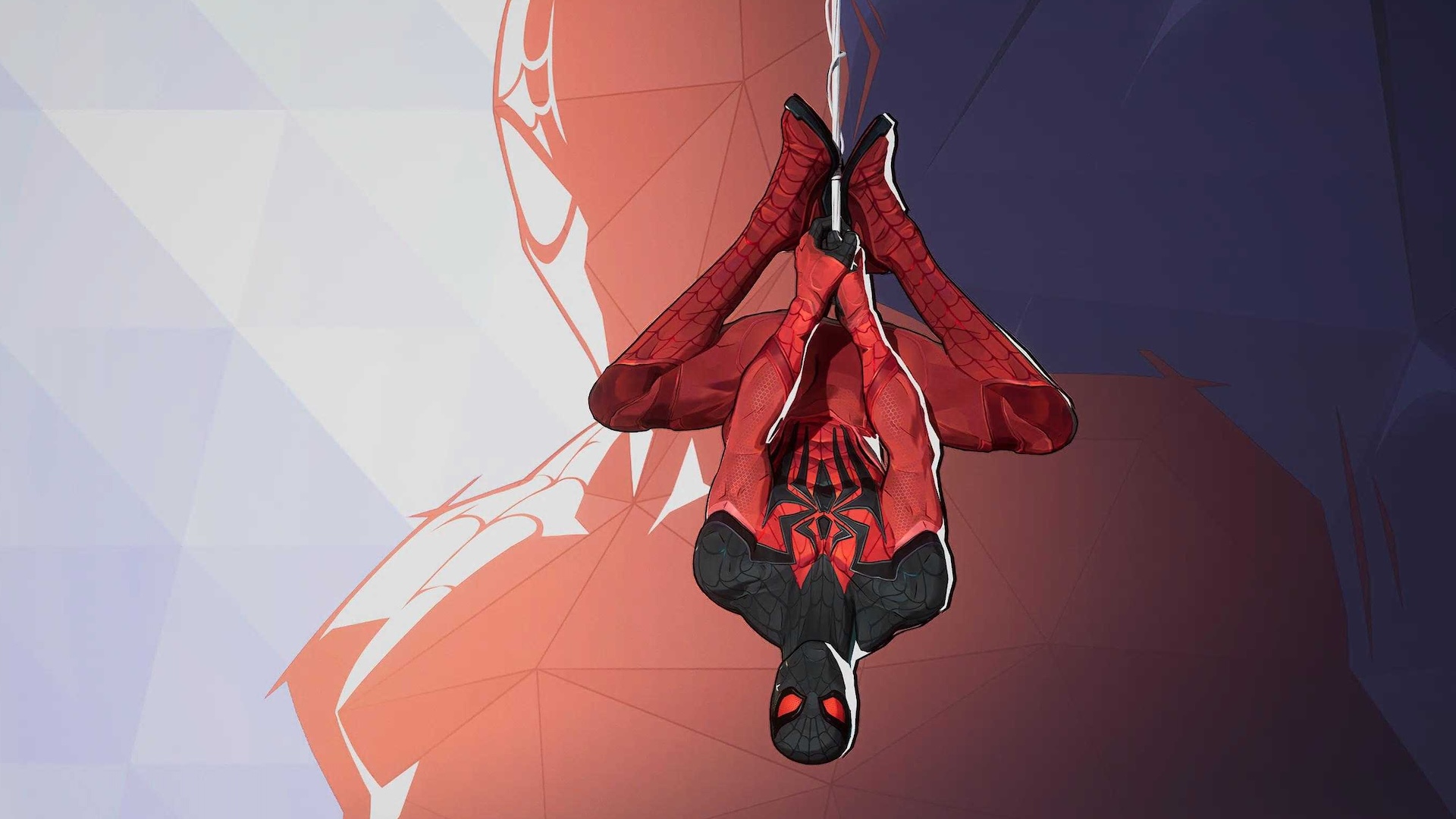
Marvel Rivals starts off on much more advantageous footing than other games of its ilk thanks to the familiarity of its roster. Even the most casual gamer out there has some knowledge of Heroes like Spider-Man, Wolverine and Captain America, with some more out-there choices like Jeff the Land Shark being welcome surprises littered throughout the bunch.
It helps that, for the most part, each Hero plays exactly how you’d expect them to, though there are some neat subversions like Adam Warlock playing a healer focused on instant revivals of team members being the exception. Of the 33 Heroes I’ve now tried out, only a few have been complete non-starters, as I’ve been able to find the fun in the others almost instantly, even if their playstyles may not quite be my cup of tea.
Some Heroes specialize in managing character-specific gauges and effects, while others are much more straightforward, like The Punisher, whose move set revolves around a more standard third-person shooter design.
To spice things up, and I think, set its Heroes apart from being just clones of Overwatch characters, Marvel Rivals does feature a neat team-up system. Heroes like Rocket can ride on others like Groot, buffing shields and damage output. Other team ups are less direct, like how Adam Warlock will give Star-Lord and Mantis the option to revive themselves after dying via a rebirth mechanic.
So far, not all Heroes can team up with others, and not every Hero benefits from having others on the field. Venom is an example of this, though to compensate he does earn a massive max health boost thanks to an ongoing Seasonal Bonus. At their best, team-ups can sway the tide of battle. At their worst, they’re still fun passive effects to consider when picking a character.
So far, this has encouraged me to try out Heroes that I wouldn’t have done otherwise, and I’m interested to see how future Heroes will shake up Team Up abilities in the future. This isn’t to say that team-ups distract completely from the very obvious fact that characters like Black Widow are straight copies of Overwatch Heroes like Widowmaker, but it goes a long way to give Marvel Rivals a bit more of a USP.
Pick me
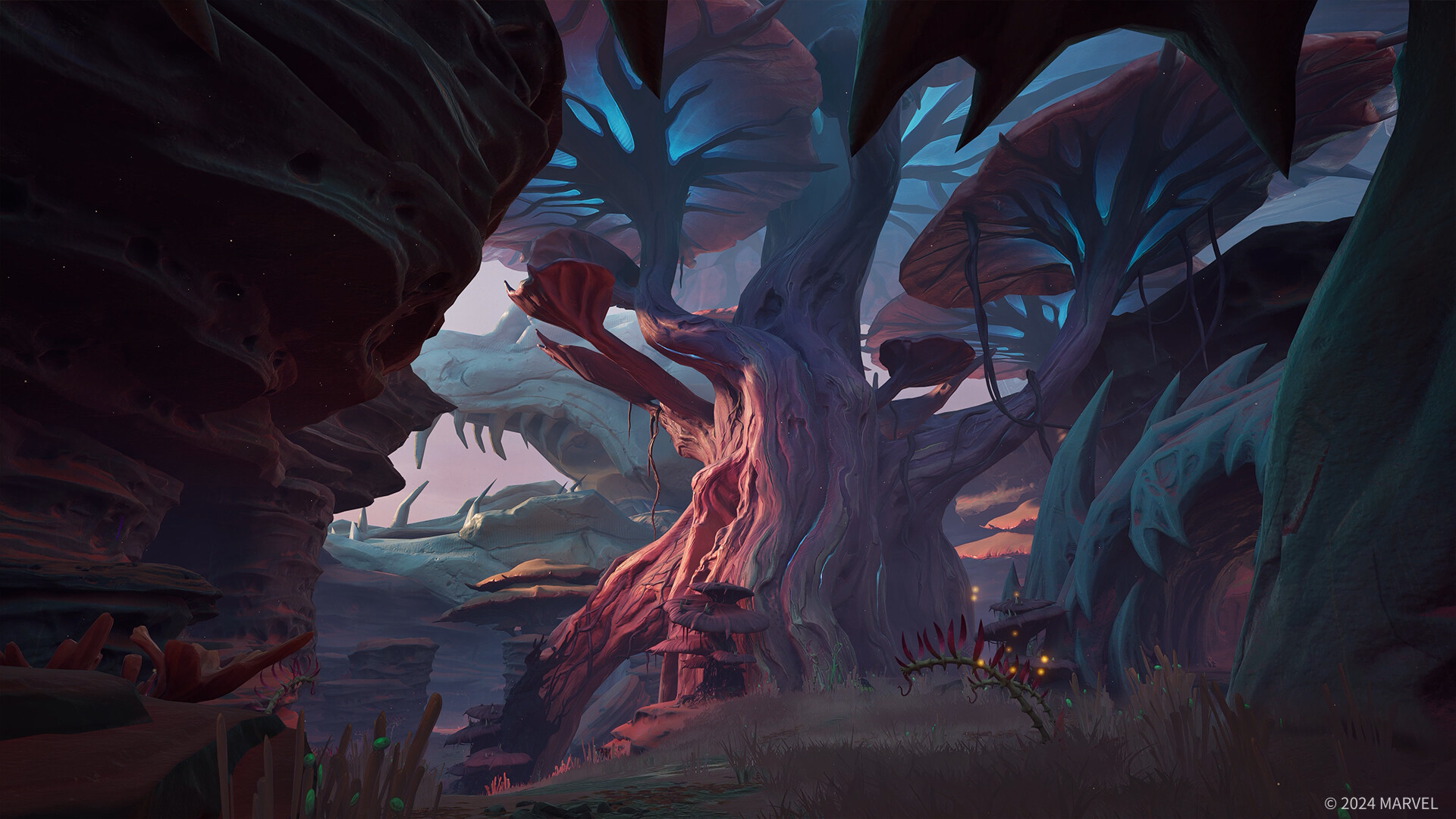
So why pick up Marvel Rivals, instead of a much more established series like Overwatch? Well, put simply, Marvel Rivals is newer, more engaging when in action, and takes itself much less seriously than its peers. Though some of the more niche corners of online gaming have already been crying out for balancing, nerfs to characters like Hela, and the addition of role queue, it’s hard to drown out what I believe to be the attitude of the main audience.
Many characters in Marvel Rivals could be considered overpowered, sometimes you join a team with no healers and get your butt handed to you, but ultimately, it simply doesn’t kill the fun. As the game continues to grow, I have no doubt that competitive modes will become more important, but for now, Marvel Rivals is a great thing to just pick up and play. Whether you choose a ‘broken’ character like Iron Fist, or someone less meta-focused like Wolverine, it’s possible to pull off some truly thrilling plays.
There’s an argument to be made that Marvel Rivals didn’t need to launch with so many Heroes, that 20 would have resulted in a better balanced product, but it’s difficult to say that the scrappy but exhilarating state of gameplay at the moment isn’t right where things should be. There are absolutely some issues with match balancing however, with some maps feeling unfairly weighted depending on which side your team starts at.
Similarly, some maps have choke points right from the first spawn point, leading to the feeling of throwing yourself into a meat grinder from the very moment a match begins. None of these issues are deal breakers, and this is Season 0 after all, so hopefully the first proper balancing patch will help smooth over some of the rougher edges present in the launch version.
Clearly, Marvel Rivals is striking the right chord with players, given the ever-growing player counts and social media dominance it is enjoying post-launch. For me, there’s plenty of room for Marvel Rivals to grow, hopefully with the addition of more modes, maps and Heroes, but for a free-to-play title launching during such a difficult time for live service games, it sure has come out of the gate swinging.
Should I play Marvel Rivals?
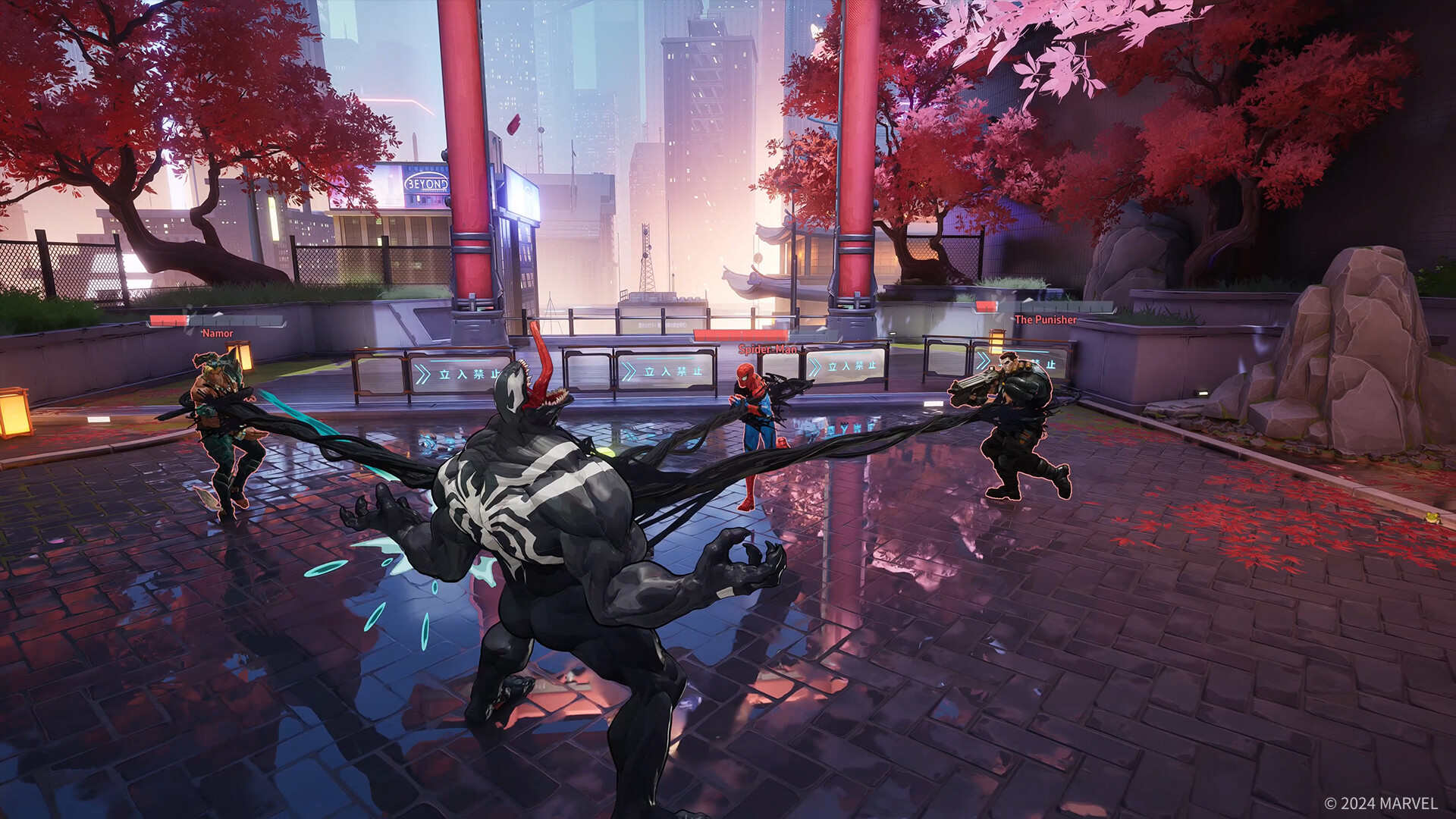
Play it if…
You want a new multiplayer game that’s easy to pick up
With a huge suite of Heroes to choose from Marvel Rivals offers players a variety of different play-styles to choose from. Unfortunately, the in-game tutorials aren’t quite good enough, but a star rating value is assigned to each character, helping you decide on which ones are aimed towards beginners, and which ones might have more complex designs.
You love Marvel
Even the most die-hard Marvel fans will be delighted to find deep-cut Heroes like Jeff the Land Shark included in Marvel Rivals. Both in and outside of matches, there’s a tonne of Easter Eggs from the comics, and an overarching seasonal story line to enjoy. My favorite part of this? Undoubtedly the brief character interactions that occur just before a match starts.
Don’t play it if…
You’re expecting a straight Overwatch clone
Marvel Rivals borrows a lot from Overwatch, but it feels like a very different game in action. There’s a lot more variety in the roster of Heroes, with some characters like Iron Fist offering a truly unique way to play. The stakes are a lot lower here too, meaning you can jump in and play how you want to, without the fear of having to run specific roles while juggling team compositions.
Accessibility
Marvel Rivals has a fairly standard suite of accessibility options, though they are limited when compared to other online shooters.
There’s a color blind mode, as well as the option to assign custom colors to elements like allies, shield HP bars, and other parts of the in-game UI.
In terms of controls, there’s very few accessibility options, besides button mapping, and the ability to assign specific control schemes to selected Heroes.
How I reviewed Marvel Rivals
I played Marvel Rivals for 25 hours on the PS5 Pro.
During that time I spent at least three matches with every Hero, but focused on maining Captain America, Iron Fist, Mantis, Venom and Punisher. In terms of modes, there aren’t many, so I tried them all. I purchased Season 0’s Battle Pass, and have worked through it while completing Daily, Weekly and Seasonal challenges.
I played the game using a 4K LG TV. I used a standard DualSense Wireless Controller, with the Razer Blackshark V2 headphones connected via the controller port.
First reviewed December 2024.
0 comments:
Post a Comment